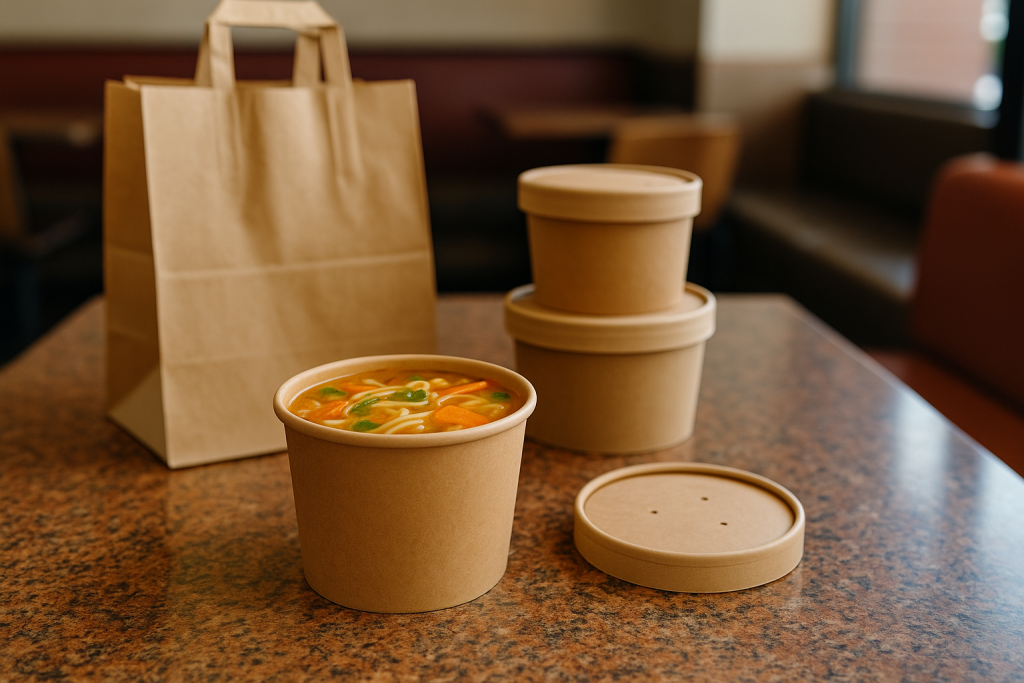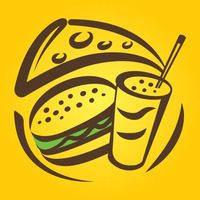Can Takeout Ever Be Truly Eco-Friendly? The Surprising Role of Kraft Soup Containers in Sustainable Dining

A Real Takeaway Moment That Started It All
“Do you have paper containers instead of plastic ones?” a customer asked at a busy takeaway counter in Lahore, holding a steaming cup of soup. The manager hesitated — they had recently switched suppliers, and the eco-friendly stock was delayed. That single moment sparked a simple yet powerful question: can takeout packaging ever be truly sustainable?
This question inspired our deep dive into kraft paper soup containers, now redefining takeaway and takeout packaging across Asia and the Middle East. These containers are not just trendy — they are setting a new global benchmark for eco-friendly dining convenience.
Why Kraft Soup Containers Are Changing the Takeout Game
According to the UN Environment Programme, the world produces over 400 million tonnes of plastic waste each year, with food packaging making up nearly 40% of it. The takeaway and food delivery sectors, heavily dependent on disposable containers, are now under global pressure to evolve.
That’s where paper soup containers with lids made from kraft or white cardboard come in. Crafted from renewable fibers, they feature a plant-based PLA lining or aqueous coating that keeps liquids sealed without using petroleum plastic. Businesses switching to this packaging report higher consumer approval, lower waste disposal costs, and stronger environmental credibility.
In fact, eco packaging specialists like Bioleader manufacture high-performance paper soup containers with lids designed to withstand heat, moisture, and long delivery times — perfect for soups, noodles, curries, and ramen bowls.
The Science Behind Kraft Paper Takeout Packaging
Kraft paper is not just a marketing term; it’s an engineered solution.
- High tensile strength: The kraft process retains long cellulose fibers, making containers tear-resistant and ideal for heavy, hot meals.
- Thermal endurance: With bio-lining, containers can resist temperatures up to 120°C — suitable for microwaving and reheating.
- Sustainability: Certified kraft packaging decomposes within 90–180 days under industrial composting, reducing landfill waste dramatically.
- Reduced carbon emissions: Life-cycle assessments show kraft packaging emits 70% less CO₂ than conventional plastic containers.
A 2024 study from the Food Packaging Forum found that kraft containers coated with PLA or aqueous layers leave zero detectable PFAS and no harmful residue, ensuring food safety even at high temperatures.
Real-World Case Study: When Eco Choices Save Money
In early 2025, a Pakistani quick-service soup chain replaced all polystyrene cups with Bioleader kraft soup containers. Their goals: compliance with new local waste laws, better consumer perception, and operational efficiency.
After 90 days, the results were impressive:
- Plastic waste reduced by 68%.
- Customer satisfaction rose 81%.
- Storage space savings reached 20% due to stackable container design.
- Brand perception improved, leading to more online engagement from eco-conscious diners.
Beyond function, these containers became a visual symbol of quality. The brand’s brown kraft look and printed logo aligned perfectly with its “eco-chic” takeaway rebranding.
Restaurants can also opt for various sizes such as 8oz, 12oz and 16oz using customized logo kraft soup containers — an ideal solution for takeaway branding that merges aesthetics with sustainability.
Why Takeout Brands Are Making the Switch
The global movement toward sustainable packaging is no coincidence. Businesses are responding to three converging forces:
1. Tightening Regulations
From the UK to the UAE, bans on single-use plastic containers are pushing foodservice operators to adopt certified compostable alternatives. Kraft containers comply with EN13432 and local waste regulations without requiring new equipment.
2. Evolving Consumer Expectations
A Statista 2025 survey revealed that 73% of consumers prefer restaurants offering eco-friendly packaging, with Gen Z diners especially associating sustainability with brand quality. In competitive takeout markets, packaging has become a silent marketing tool.
3. Operational Efficiency
Kraft containers are stackable, printable, and grease-resistant, making them ideal for fast-paced kitchens and delivery platforms. Unlike brittle biodegradable plastics, they maintain strength and appearance during long delivery times — crucial for customer satisfaction.
The Bioleader Advantage
Bioleader, a leading China-based OEM/ODM manufacturer, has positioned itself as a pioneer in compostable packaging innovation. With a full product line that includes kraft containers, bagasse plates, cornstarch cutlery, and PLA cups, Bioleader supplies over 60 international markets.
Their kraft paper series meets FDA, EN13432, and BPI standards, ensuring safety and sustainability throughout the product life cycle. In addition, the company offers customized printing, enabling restaurants and delivery brands to combine functionality with professional branding.
For cafés, soup bars, and fast-casual restaurants, Bioleader’s solutions make sustainable packaging practical, not just aspirational.
Data Snapshot: Kraft vs. Plastic Packaging
| Category | Plastic Containers | Kraft Paper Containers (Bioleader) |
| Source Material | Petroleum-based PP/PS | FSC-Certified Kraft Paper |
| Compostable | ❌ No | ✅ Yes (EN13432 Certified) |
| Microwave Safe | Partial | Fully safe up to 120°C |
| Custom Printing | Limited | Full-color logo print available |
| CO₂ Footprint | High | 70% Lower |
| Customer Perception | Neutral | Eco-Positive |
| Disposal | Landfill | Compost / Recycle |
Industry Data: The Future of Eco Takeout
Global market data from Allied Market Research predicts that the eco food packaging sector will surpass USD 340 billion by 2030, driven largely by consumer awareness and government restrictions on non-compostable plastics.
For food brands, the financial argument is equally strong: sustainable packaging can boost brand loyalty by up to 25%, especially among millennials who order food through mobile platforms multiple times per week.
FAQ
1. Are kraft soup containers suitable for both hot and cold dishes?
Yes. They can safely store soups, stews, ice creams, and salads without leaking or softening.
2. Can kraft paper containers go in the microwave?
Most Bioleader kraft containers, with PLA or aqueous coating, are microwave-safe up to 120°C for short reheating.
3. How long does kraft paper packaging take to decompose?
In industrial composting, decomposition completes within 90–180 days, depending on conditions.
4. Are these containers safe for food contact?
Absolutely. Bioleader kraft containers are PFAS-free, FDA-approved, and EN13432 certified, ensuring food-grade safety.
5. Can restaurants add their branding or logo?
Yes, Bioleader supports custom logo printing on kraft containers (8oz–16oz) to enhance brand recognition during delivery and takeaway service.
Conclusion: The Future of Takeout Is Smart, Sustainable, and Stylish
The takeaway industry is evolving faster than ever — not just in flavor, but in responsibility. Kraft soup containers embody this shift, offering a balance of convenience, safety, and environmental care.
As global packaging laws tighten, businesses that act early will not only comply but differentiate themselves through visible sustainability. With innovative partners like Bioleader, restaurants can confidently say their takeout experience is not just delicious — it’s responsible.
Because the future of food delivery isn’t just about what’s inside the bowl, but what the bowl itself stands for.
